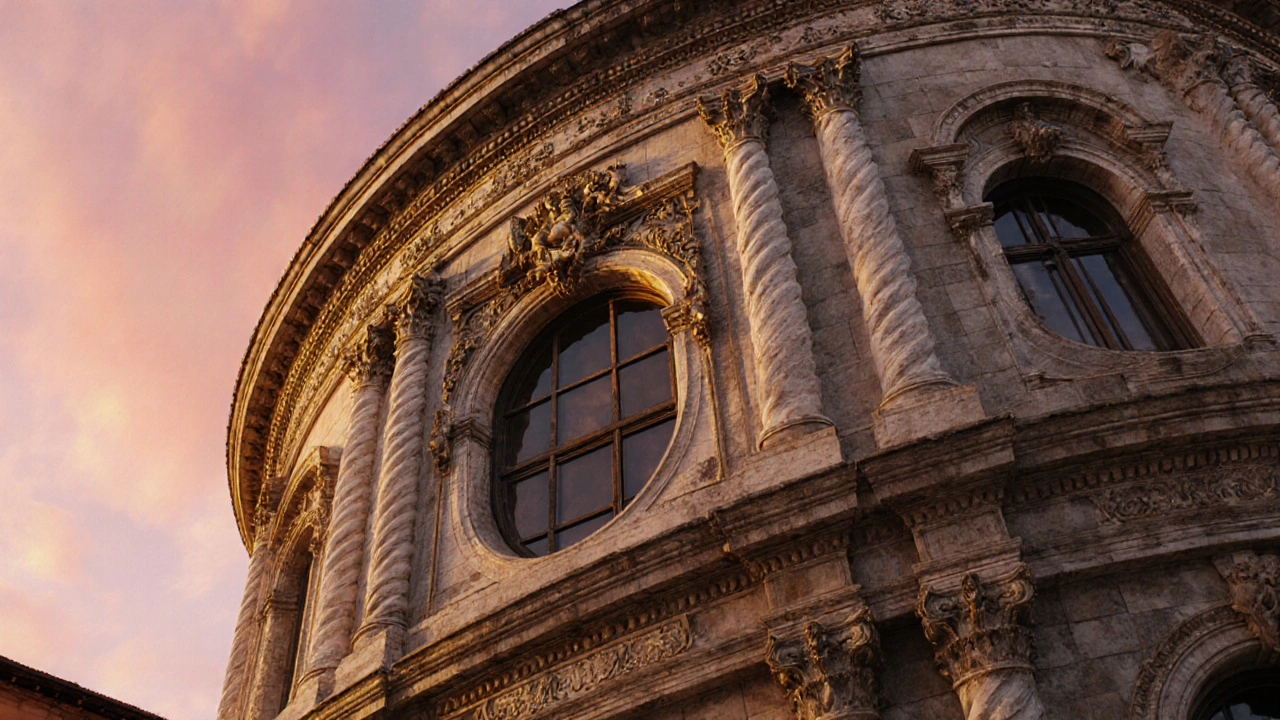Explore Baroque architecture's drama, history, key features, and famous examples worldwide. Learn how to spot the style and understand its lasting influence.
Baroque History: From Origins to Modern Influence
Baroque started in early 17th‑century Italy as a reaction to the calm of the Renaissance. Architects and artists wanted movement, emotion, and big statements. They used curves, rich decorations, and clever light tricks to pull viewers into a scene. The style quickly spread to Spain, France, Germany, and even the colonies, shaping churches, palaces, and public squares.
What makes Baroque stand out? First, the sense of motion. Facades sweep upward, staircases twist like ribbons, and interiors burst with frescoes that seem to spill into the room. Second, contrast matters. Light and shadow play against each other, highlighting details and creating drama. Finally, everything feels alive – statues appear to breathe, columns sway, and ceilings open up to the heavens.
Key Features of Baroque Architecture
When you walk into a Baroque building, look for a few tell‑tale signs. Massive domes sit on tall drums, often crowned with lanterns that let light flood the interior. Facades are layered with columns, pilasters, and broken pediments that add depth. Ornamentation is abundant: carved stucco, gilded details, and winding scrolls cover walls and ceilings. Windows are placed to create dramatic lighting effects, especially in churches where morning sun might illuminate a central altar.
Inside, you’ll notice oval or elliptical plans instead of strict rectangles. This gives spaces a fluid feel and lets the eye move naturally from one point to another. Frescoes often blur the line between architecture and painting, extending real‑world space into imagined heavens. Think of Gian Lorenzo Bernini’s work in Rome – his St. Peter’s Baldacchino uses twisted columns and a soaring canopy to draw eyes upward.
Baroque’s Lasting Impact Today
Baroque didn’t disappear after the 18th century; it left a toolbox that designers still reach for. The dramatic use of light inspired modern stage design and cinema lighting. Architects now reinterpret Baroque curves in glass and steel, creating sleek towers that echo historic movement without the heavy stone.
In city planning, the Baroque love for grand axes and focal points shows up in boulevards and civic squares. Paris’s Champs‑Élysées and Washington D.C.’s National Mall both follow Baroque principles of sightlines and symmetry, guiding pedestrians toward key monuments.
For everyday observers, spotting Baroque details is easier than you think. A church with a richly decorated façade, a palace with a sweeping staircase, or even a modern museum that uses bold curves can be a Baroque echo. Learning these cues turns a simple walk into a visual adventure.
So the next time you see an ornate doorway or a ceiling that seems to open up to the sky, pause and ask yourself: is this a piece of Baroque history talking to us? Understanding the style’s drama and detail lets you appreciate the story behind the stone, plaster, and light.

